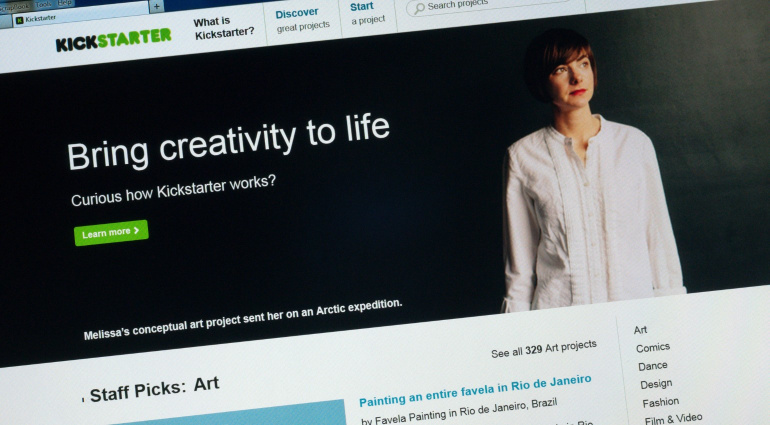Is Kickstarter Reaching Its Limit? When Backers Only Lose Out, as I Have Experienced Firsthand!
What Happens When a Campaign Goes Wrong? Who Pays the Price?
For years, music enthusiasts, producers, and gear fans have invested their money in exciting Kickstarter projects, hoping to find the next big plugin, the smartest synthesizer, or the most original studio tool. Instead of fresh ideas, however, they’ve only received disappointment, radio silence, and even complete project abandonment lately. What was once celebrated as a platform for innovation has turned into an unpredictable risk for many supporters, and this is no longer limited to niche products. In the audio world, there are also increasing examples of promised hardware never being delivered, software being released unfinished, and supporters being ignored for months. It’s time to take a closer look at the Kickstarter system and what the audio community’s backers can learn from it.
Disappointed by Kickstarter? Here’s What Backers Need to Know
Kickstarter: Dream Factory or Backer’s Nightmare?
For a long time, Kickstarter was seen as a beacon of hope for creative projects and technical innovations that would never have seen the light of day without traditional investors. However, the idealistic concept seems to be increasingly overtaken by reality. Reports of failed projects, missed deliveries, and backers who never see their money again are becoming commonplace. Many comment sections suggest that what was originally a transparent community has become a questionable financing model with no security for backers.
Many campaigns that initially presented impressive renderings and promising visions ended in chaos or were discontinued without a trace. What’s particularly problematic is that Kickstarter itself does not take responsibility for the outcome of projects. Contracts exist exclusively between project initiators and backers, meaning the platform does not intervene in the event of major problems. Even obvious indications of fraud rarely result in consequences. Trust in the crowdfunding pioneer is crumbling, especially among those who have had multiple negative experiences.
Is it Innovation or a Scam in Disguise?
While some projects simply fail due to circumstances beyond their control, there are now more and more indications of deliberate deception. Campaigns with artificially generated hype, manipulated comments, and fake product promises are no longer the exception. In tech-savvy areas such as gadgets, music tools, and audio equipment, there are increasing cases of products never being completed despite raising hundreds of thousands of dollars. This makes the Kickstarter community increasingly suspicious because those who have been disappointed several times are likely to think twice before investing in a concept based on nothing more than pretty pictures.
The big question is therefore: Has the Kickstarter concept had its day, or can the platform counteract this trend with stricter guidelines, greater transparency, and genuine protection against misconduct? In its current form, the platform seems like a high-risk game to many supporters because there is little tangible control and no reliable consequences for project initiators who simply disappear. Anyone getting involved with Kickstarter today should be aware of the potential pitfalls because the line between an innovative idea and an expensive flop has long been blurred.
When Kickstarter Doesn’t Deliver: How Affected Backers React
The situation is particularly difficult for creative industries, such as music production, synthesizer development, and boutique plugin manufacturing. Many projects in these industries are launched on Kickstarter because traditional distribution channels are blocked. Backers who support these projects out of a genuine passion for sound, aesthetics, and technical design often do so out of idealism, only to be dismissed with empty promises while project initiators remain silent or make vague excuses for delays. This makes the environment increasingly toxic for independent developers who want to deliver because even reputable campaigns have to contend with a massive loss of trust these days.
Experienced users increasingly use the word “scam,” even if it is not always legally accurate. However, the emotional damage caused by broken promises and months of waiting cannot be downplayed. Investors don’t expect miracles when they invest their money in a project they believe in on Kickstarter, but they do expect transparency, communication, and a sense of responsibility. Without these, mistrust dominates rather than innovation, which has consequences for the future of crowdfunding as a tool for creative financing.
Conclusion and Personal Experience
I wrote this article after making several “bad investments” in products that I had reported on positively here at GEARNEWS. I don’t want to name names or badmouth companies or individuals. Needless to say, I am disappointed and angry that I paid around €1,000 to several companies whose products were never shipped to backers. These companies have not published any updates on the project for weeks or months and do not respond to emails or messages on Kickstarter, social media, etc.
Furthermore, Kickstarter has not addressed the issues and merely refers to its own statutes. Once a project is funded, the project founder receives the money, Kickstarter gets a share, and Kickstarter is “off the hook.”
*P.S. Other crowdfunding platforms are also affected and respond similarly or identically to these problems.
What do you think about this issue? Have you had similar experiences? Will you continue to invest in projects via these or similar platforms? Feel free to leave a comment below or on our Facebook or Instagram pages.
More Information
- Website
- More about Kickstarter
7 responses to “Is Kickstarter Reaching Its Limit? When Backers Only Lose Out, as I Have Experienced Firsthand!”


 4,3 / 5,0 |
4,3 / 5,0 | 







Duh! Go hand $1000 to a stranger on the street. That’s Kickstarter. The miracle is there anything actually gets made at all.
I haven’t had really bad experiences – but only non-fullfilling ones, like a product that promised PC compatibility – but never did (and I am not buying a Mac to use it). Another made a nice product, but the company went bankrupt so support is gone, then a software product – creation platform which was really nice, but then – first was made free (which was sort of OK) – but then closed. Put together the 3 experiences mean I am not really tempted anymore – which is definitely sad for all the truly creative people with ideas, dreams and good intentions. Adding in the risk of encountering deliberate “scammers” has certainly not made me more interested.
To some extent a funding site could do something to secure that projects are for real. However if they are dealing with deliberate “scammers” they will happily produce fake documention along with fake product renderings and fake descriptions etc.
One possible remedy would be to withhold investor’s backing money and release it in “progress” segments: maybe a 1/4 of the funds to start with additional 1/4 funds being released to the innovator only with proof of progress and at pre-designated periods of verified progress. If a developer fails to meet those progress periods the pro-rated and remaining investor’s money would be returned to them—based upon what their initial investment was. Complicated, yes, but fair.
Campaigns that look too good to be true are likely fraudulent. You know before you commit what is being offered and the cost. Yes, it is a gamble, but common sense will guide you. Do some research on the company and previous campaigns as well as the product being offered.
I have funded many so far and all have delivered what was promised.
Having completed multiple Kickstarters, Indigogo and most recently Backerkit, I think we would suggest looking closely at the makers credentials. There are definitely people who went to crowdfunding a great idea, but have no idea how they are going to achieve it. We didn’t start our crowd funding campaign until we had a working prototype and line of site to success. Making hardware is hard, and there needs to be people involved that know how to do it. Also, it’s not a store, you are not buying anything, you are supporting someone’s endeavor and get a prize if they succeed. Don’t look at the widget and think you are buying it. Look at who is asking for support and decide if you want to help them.
I have backed over 60 Kickstarter projects, and only about 5 have been “bad”, and only one of those was about music gear. the others were board games and other products. I have had probably 15 music gear related Kickstarter delivered without issue.
I’ve backed a few Kickstarter projects over the years — some were amazing, but others never delivered. It’s true that it’s a risk, and I’ve learned to approach it more like supporting an idea rather than buying a product. That said, I still love the spirit of innovation on the platform and just hope Kickstarter can improve accountability moving forward.
You are currently viewing a placeholder content from Facebook. To access the actual content, click the button below. Please note that doing so will share data with third-party providers.
More InformationYou are currently viewing a placeholder content from Instagram. To access the actual content, click the button below. Please note that doing so will share data with third-party providers.
More InformationYou are currently viewing a placeholder content from X. To access the actual content, click the button below. Please note that doing so will share data with third-party providers.
More Information